This week, Road Trips with Tom cruises down Interstate 19 from Tucson to Nogales, Arizona – and back. It’s only 63 miles from one end to the other, but there’s easily enough to see and do along I-19 to occupy a few hours or a whole weekend.
Along the way you’ll find open desert, pine-clad mountains, art, architecture, an international border, and history covering the Spanish colonial days to the Cold War. The ideal time for this trip is March and April.
Featured photo: Tumacacori church, by Tom Dell.
From Tucson, I-19 branches south from I-10 and follows the Santa Cruz River all the way to Mexico. The countryside is open desert with various shrubs. You won’t see any stately saguaros along the route – they peter out just south of Tucson. As rivers go, the Santa Cruz is a pathetic trickle most of the year. Yet it has a major historical significance. Its valley was the avenue by which Spain established the first European settlements in what is now Arizona.
I-19, for a reason that must make sense to somebody, measures distances in kilometers rather than miles. Kilometer 0 is Nogales, so our exit numbers will get smaller as we motor southward. Speed limits, however, are NOT metric.
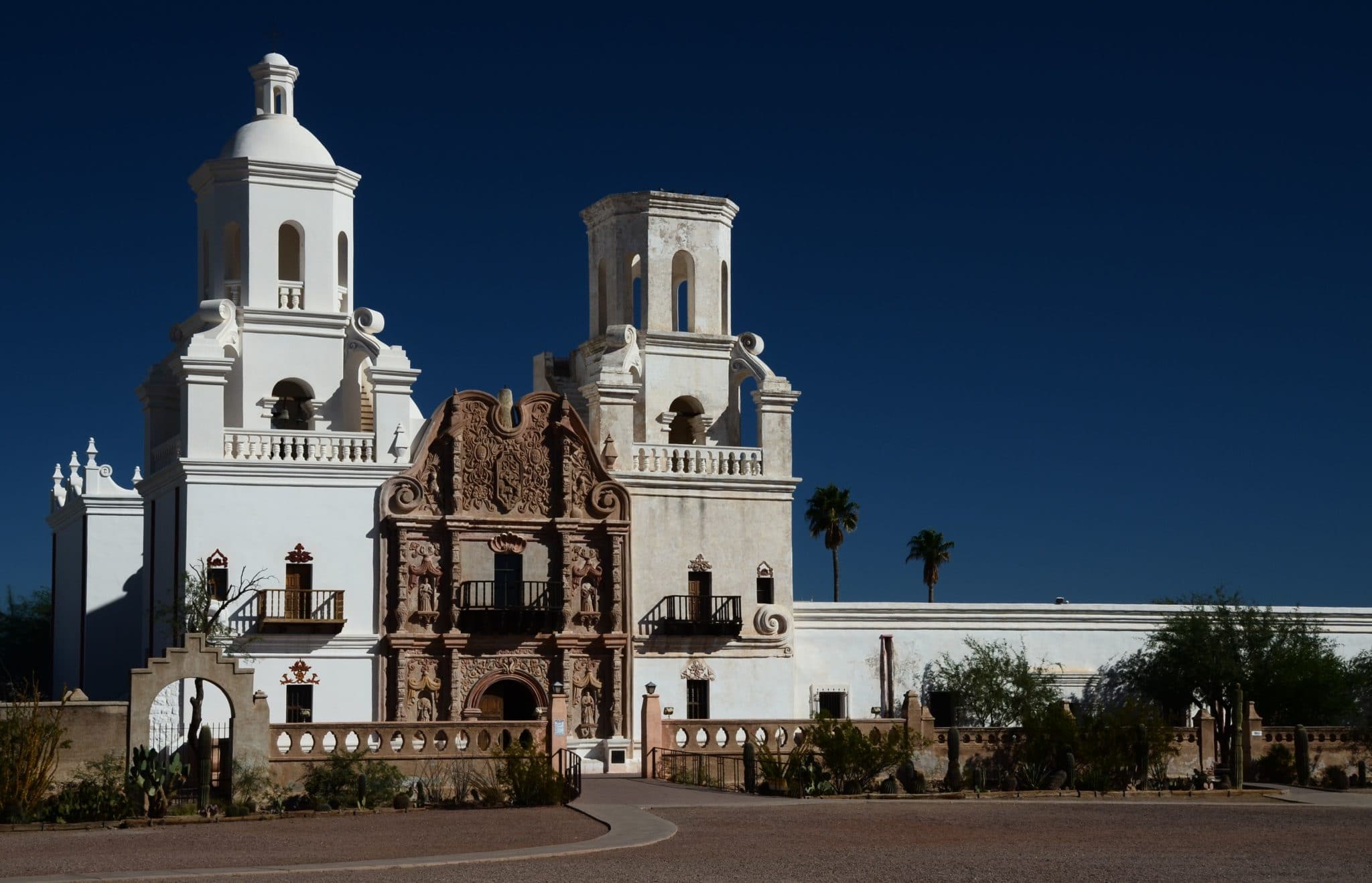
White Dove
Our first stop is just a few miles from Tucson. Take Exit 92 for Mission San Xavier del Bac, popularly known as “the White Dove of the Desert.” This is the most spectacular church I’ve ever seen! It’s considered the best example of Spanish colonial architecture in the United States.
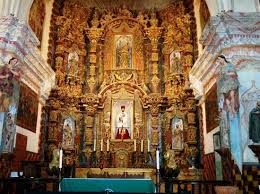
The church was founded in 1692 by Padre Eusebio Kino. Construction went through several phases and wasn’t completed until the late 1700s. It’s still an active parish church, serving the Tohono O’odam people. The reason there’s only one bell tower is that the church ran out of funds, and it’s stayed this way for over two centuries.
The church is open 7-5 daily. You’re welcome to take photos, even using flash. The museum is open 8-4:30, and the gift shop stays open until 5. Admission is free, although it’s wise to leave a donation. Free docent tours are given daily except Sunday. For the schedule, go to www.sanxaviermission.org and follow the link in the green box on the right.
Goodbye, Moscow
And now, for something different, we go from peace and majesty to death and destruction. Actually, our next stop is pretty cool. It’s the Titan Missile Museum, which you’ll find by taking Exit 69, driving west on Duval Rd. and following the signs. During the Cold War, this was a key defense installation — one of 54 sites where giant, nuke-equipped missiles were kept in a state of constant readiness. The museum preserves the site as it was in 1982.

You’ll go underground, where you’ll see the missile itself (110 feet long, 170 tons and 400,000 pounds of thrust, with a range of up to 8,000 miles) and experience a simulated launch sequence. This happens only on the one-hour guided tour that’s included with your admission ticket.
For the schedule, go to www.titanmissilemuseum.org. Admission is $9.50 for adults, $8.50 for seniors and military, and $6 for ages 5-12. The above link didn’t work during my final check, but it worked when I pasted it into my browser.
Tweet, tweet
No, we’re not going to use Twitter. Rather, we’ll head to beautiful Madera Canyon, which is one of the country’s best birding spots. Over 200 species have been seen here. The canyon is in the Santa Rita Mountains, which you see on your left while heading south on I-19.
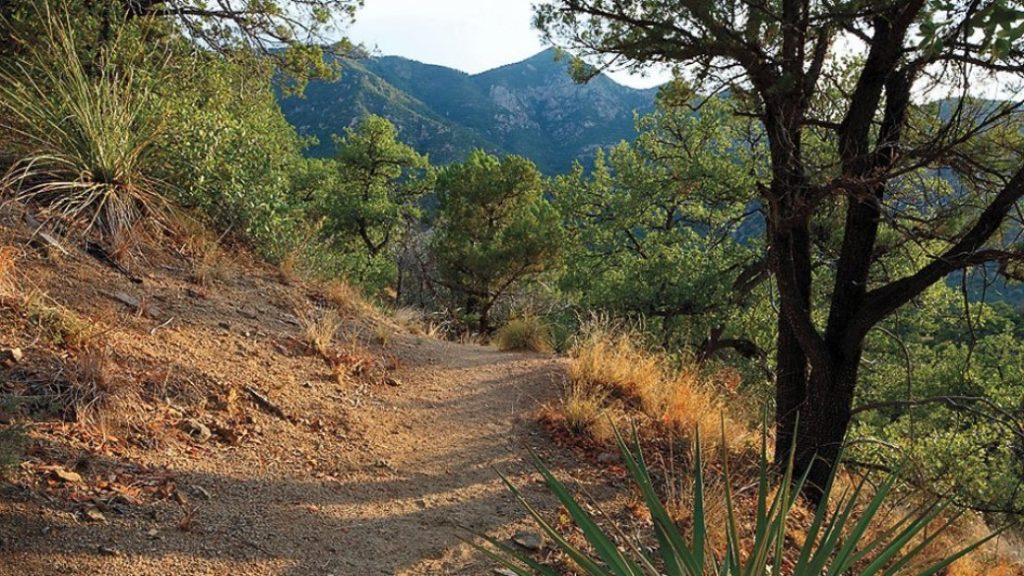
To get there, take Exit 63 and drive 11 miles on a paved road. The road takes you to 5,400 feet in a pine forest, where you’ll find trails and picnic areas. Madera Canyon is also a great place for bicycling.
Check out www.friendsofmaderacanyon.org for details.
Back on I-19, continue to Exit 34 and Tubac. Padre Kino’s early missions were beset with attacks by Apaches and had to be abandoned. In response, the Spanish colonial government in 1752 established a presidio, or military fort , which became Arizona’s first European settlement. The Spanish were forced to leave following the Mexican Revolution, and the presidio fell into disrepair. When the United States took over after the Gadsden Purchase in 1854, only a crumbling ruin was left.
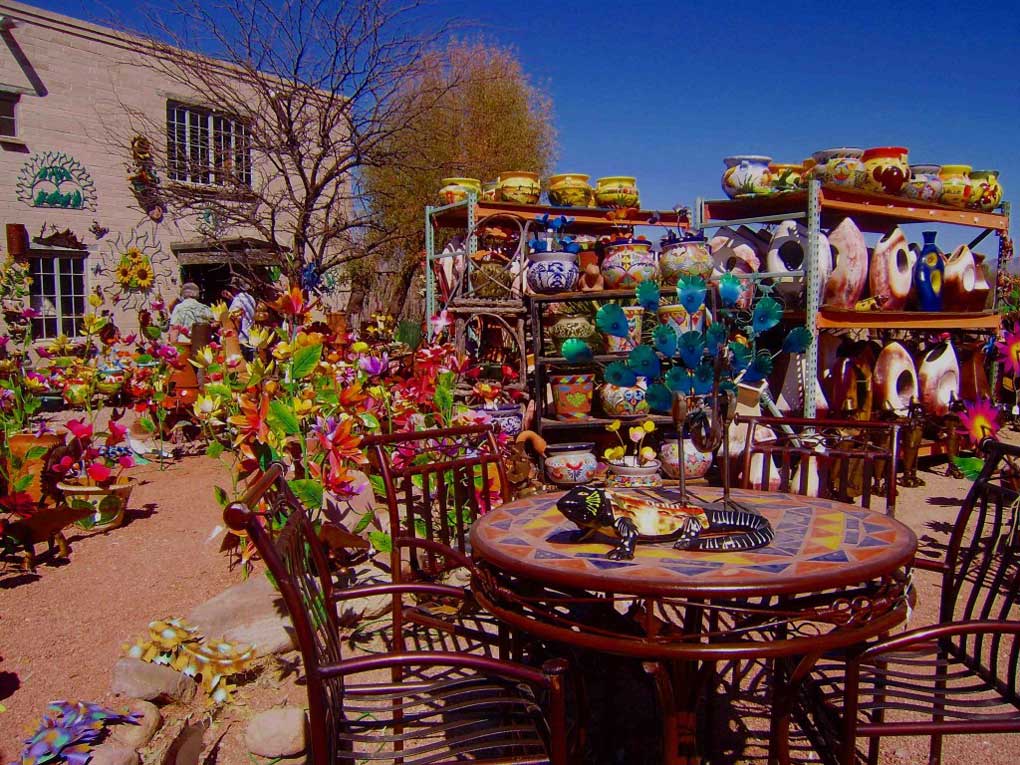
No velvet Elvises
In the mid-20th century, after a mining boom and bust cycle, an art colony began to take shape, and Tubac has evolved into a major art center. The village is a thriving mix of over 100 shops, galleries and artist studios. A good place to start is the Tubac Center for the Arts, which hosts exhibitions and live performances. To learn what will be on during your visit, call the center at (520) 398-2371. More information is at www.tubacaz.com. Again, you may have to paste this URL into your browser.
The presidio site is now Tubac Presidio State Historic Park. It’s worth a quick visit to see a few ruins and the museum, but most visitors will prefer to spend their time shopping. You’ll find several choices for lunch in Tubac.
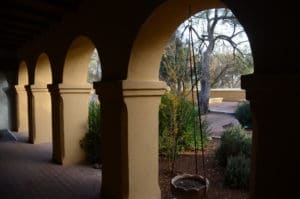
It’s just a short mosey to your next stop – Tumacacori National Historic Park. To get there, use Exit 29, then follow the signs. The centerpiece of this poignant place is a ruined (but stabilized) church, whose builders set out to rival San Xavier del Bac in size and splendor. Didn’t happen.
Padre Kino said an outdoor mass at this site in 1691, but work didn’t begin on the present church until 1800. Between Apache raids and Mexico’s secularization, Tumacacori was abandoned in 1848 and left to wither. In 1908, the National Park System took it over and later built a nice mission-style visitor center.
Take enough time to browse the visitor center/museum, then wander around and into the church. There’s a brochure-guide. Even better, hook up with one of the ranger-guided tours presented seasonally (not in summer). Times are posted on the park’s calendar, which is at www.nps.gov/tuma. Craft demonstrations are given 10-4 January-April and on weekends October-December.
Mexico?
When I-19’s kilometer posts run down to zero, you either turn back north or visit Mexico. It’s easy and, I’m told, safe to visit Nogales, Sonora, where you’ll find a plethora of shops with merchandise from all over Mexico, plus several nice restaurants – all within easy walking distance of the border. Parking is available close to the border on the Arizona side. English is widely spoken, and U.S. dollars are welcome. Some of the restaurants can even be found on Yelp and have their own web sites.
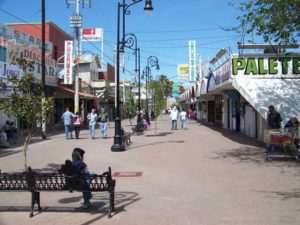
Here’s an article on visiting Nogales: https://www.tripsavvy.com/crossing-the-border-into-nogales-1652823.
You’ll find a good choice of accommodations in Nogales, Arizona. The other place on this road trip route with decent lodging is Green Valley, which is about 25 miles south of Tucson.
Thanks for joining me. The next update will be on Monday, March 12.

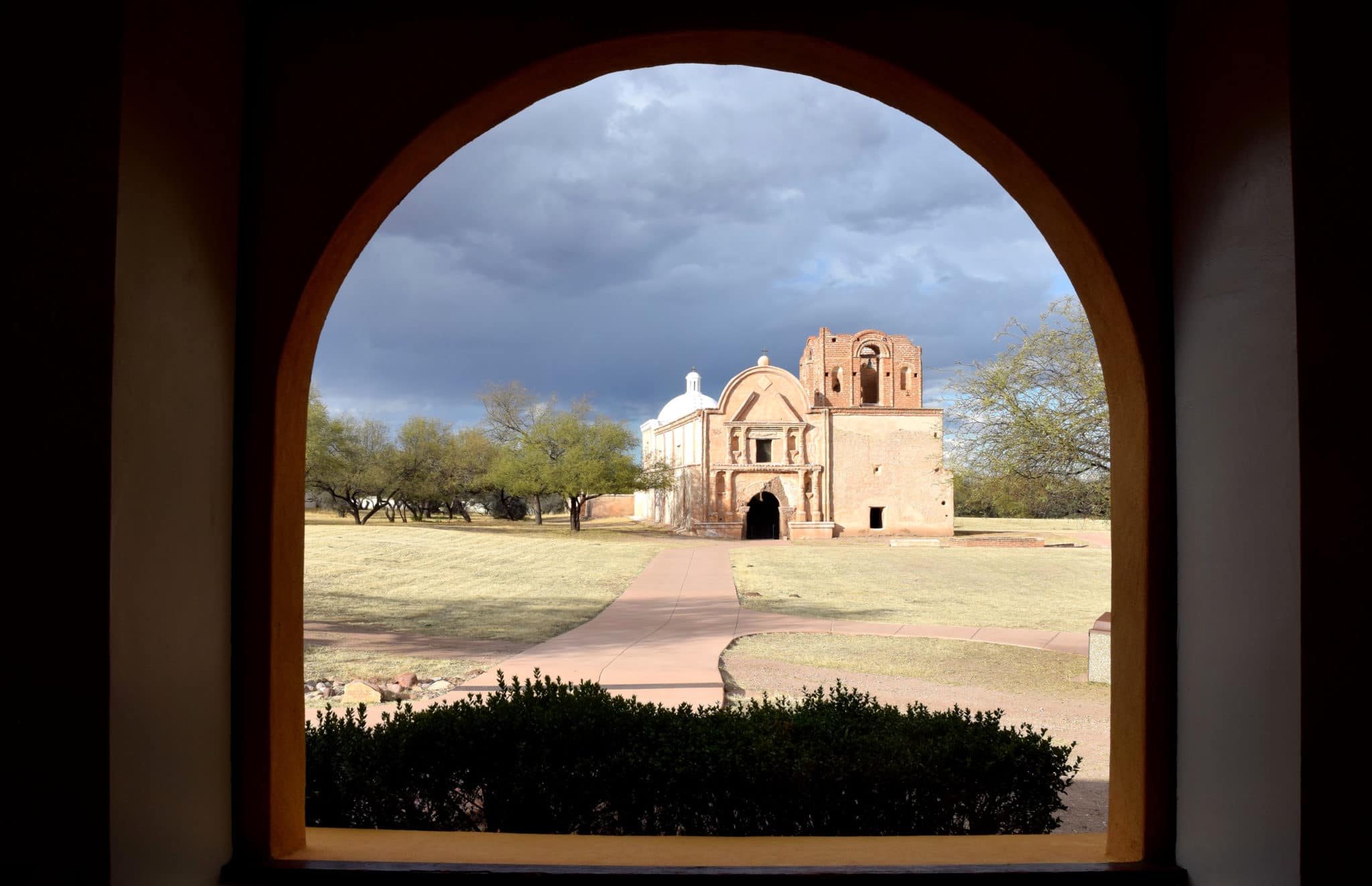
Thank you for your blog post.Really thank you! Awesome.